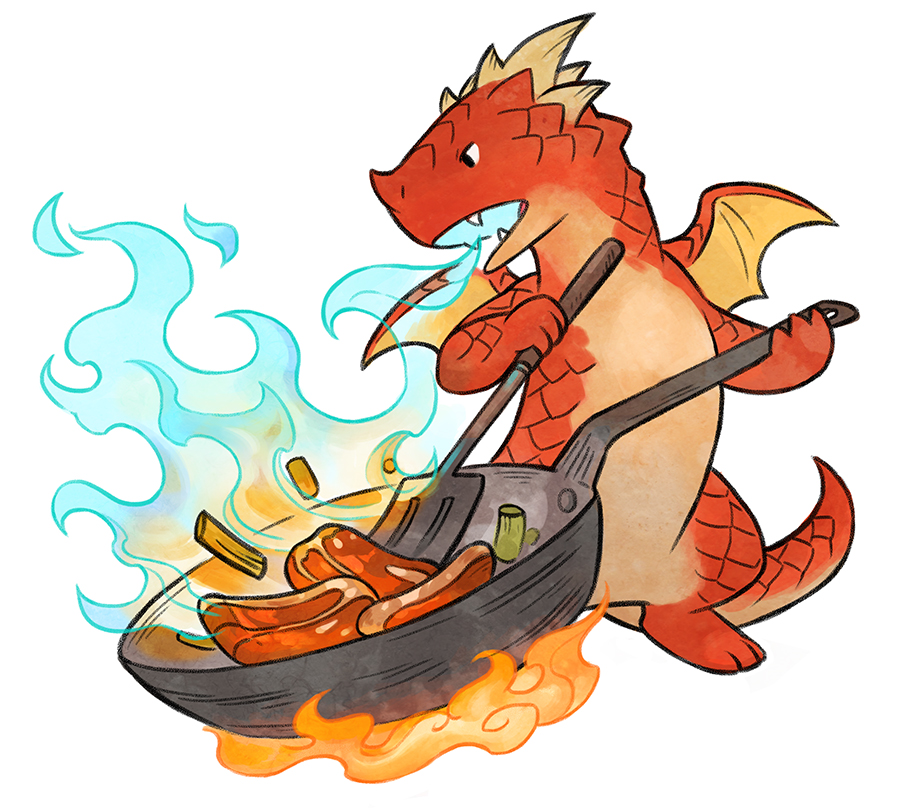10 April 2024
|
A true symbol of fantasy, the Dragon is a fearsome creature of mythology, and a focus of many a book, film, RPG and more. Usually though, the dragon is angry, using fire to terrorise, and a hoarder of gold. Our next interview flipped that on its head though, with the impossibly cute dragons of Flamecraft, the game that took Kickstarter by storm. Suddenly, dragons are artisans, making you coffee, bread, and more. We spoke to Sandara Tang, the illustrator behind our favourite bundles of cute.
Interview by Charlie Pettit
“I didn’t know anything about board games – other than things like Monopoly and Scrabble,” Tang admits of their experience before Cardboard Alchemy. “So when Manny [Vega, the game designer behind the likes of Flamecraft, also interviewed in Tabletop Gaming magazine] contacted me about making a board game, I was surprised and curious. I had done some card art for games like Lord of the Rings TCG, Game of Thrones TCG, and also for Sparkle*Kitty Nights, [Another Vega game], but those were individual pieces of art.”
In an instance of art coming first, Tang says they had drawn Creme Brulee (see this dragon in action below), which became an inspiration for the setting for the game, alongside some sketches of dragons doing jobs. Fast forward a little, and Flamecraft, the game of artisanal dragons, was born.

“Gameplay comes first,” Tang says when we ask about then creating new dragons. “We knew we had to have a certain number of types of dragons (potion, plant, iron, meat, etc) and we needed X number of these types. So my job would be to first determine how we can tell what type each dragon is, but yet have them look like distinct individuals.
“First I concepted the types, and when those concepts were locked down, I then drew each dragon. It was great that they were all working some sort of job, which meant they could hold a lot of unique props that helped make their poses distinct. As I draw, I do try to give them a bit of personality, like the crystal dragons are always a bit snobbish looking. Some of them look more serious about their jobs, some look more carefree and fun-loving.”
With such clear direction, the dragons and their shops didn’t change too much as the process went on. “Usually, once a sketch has been given the green light, changes are always kept to a minimum. This prevents time being wasted as it takes a lot more time to bring a piece of artwork to final,” though Tang says the cover took longer – simply as “we had to figure out how to make it as appealing as possible."
Related article: Painting a Story of Bonkers Victorian Antics
Starting in Board Game Art
“I have always enjoyed drawing as a child, and just never stopped. When I was younger, I took watercolour classes, and when I moved on to the digital medium, something of those classes stayed with me. You can see the watercolour influence in Flamecraft’s artstyle. I also developed a more rendered and painterly style, so effectively I have two styles of painting that I toggle between, depending on the subject matter and mood.”
“I have always loved drawing dragons, but prior to Flamecraft, I had not drawn so many small dragons before! I’m glad that dragons can be seen as cute and helpful rather than rampaging terrors.”
One argument that rages in our group when playing Flamecraft is who gets which dragon – especially with the funky upgrades that were available as part of the Kickstarter [obviously the bread dragon is the best], but what does their creator think were her favourites?

“The shop - Pizza Coven and the dragon - Flambé.” She says immediately. “Pizza Coven because the idea of witches making and delivering pizza is funny, and not only do the dragons help out in making the pizzas, but there is a Bread dragon in the delivery bag helping to keep the pizzas warm. [And] Flambé, because he was one of the first dragons I drew and he encapsulates what a Flamecraft dragon is very well”

Tang has continued to illustrate for board games, most recently with Critter Kitchen – a similar vibe to Flamecraft, but more varied critters and more complex art – and plans to continue illustrating for board games in future.







